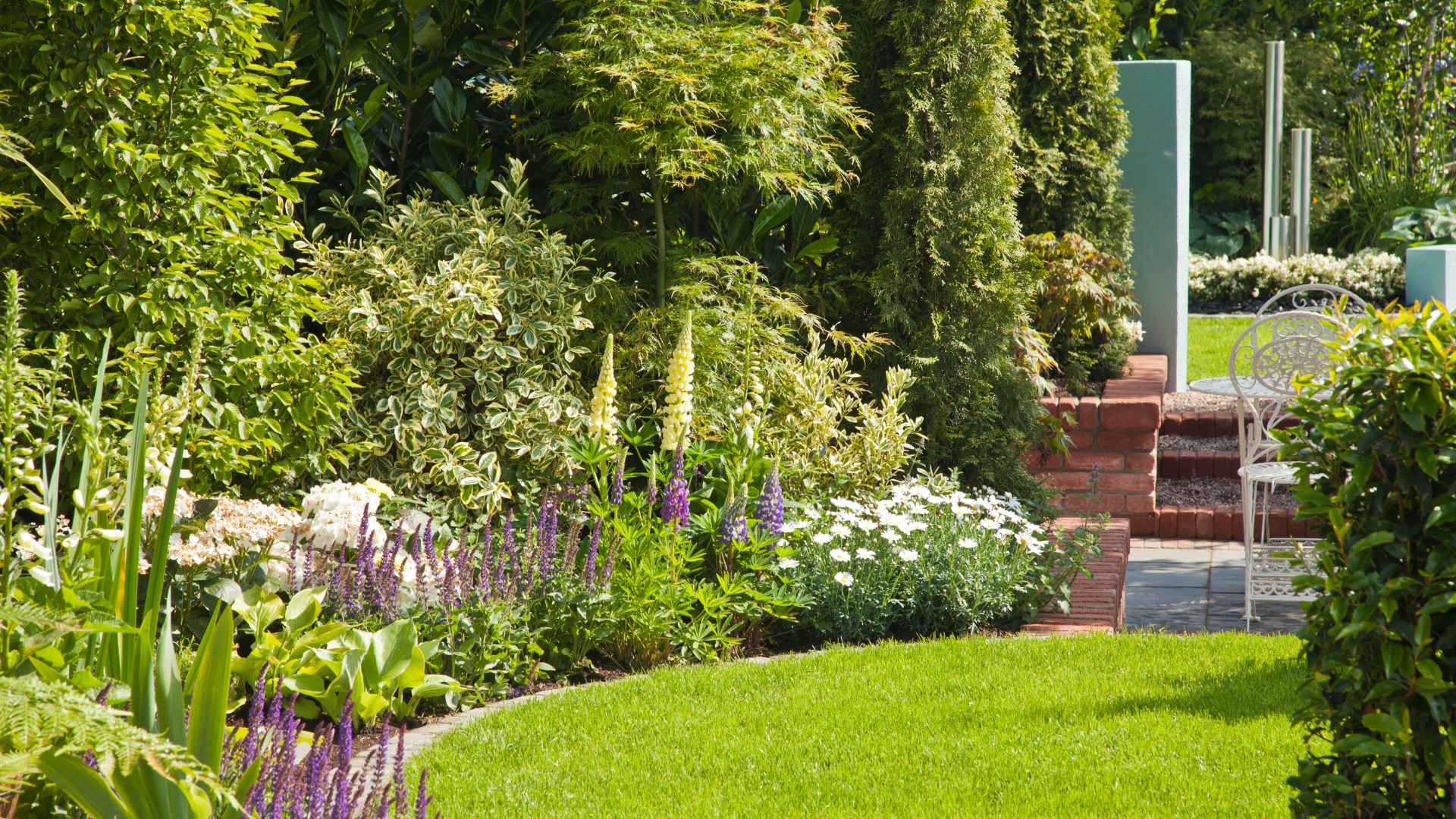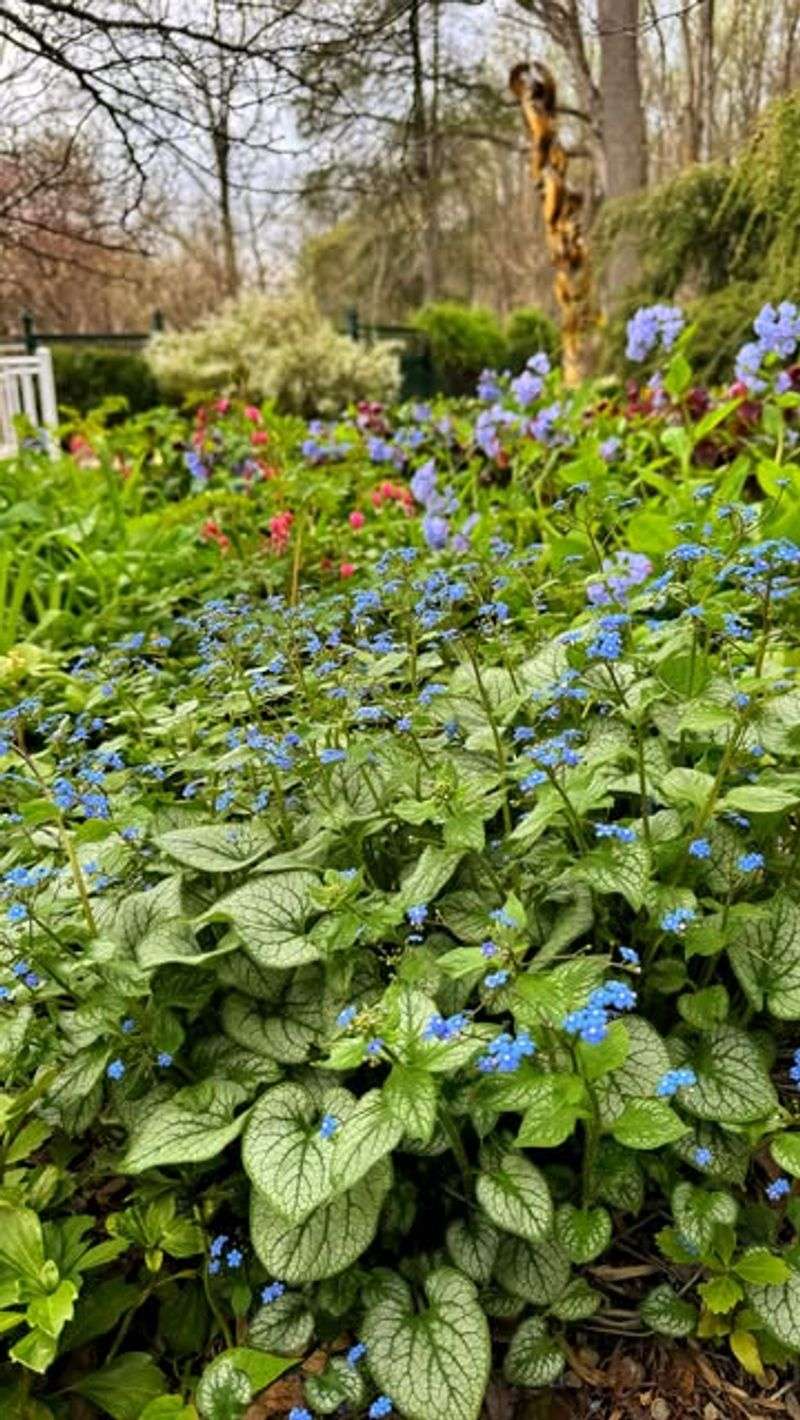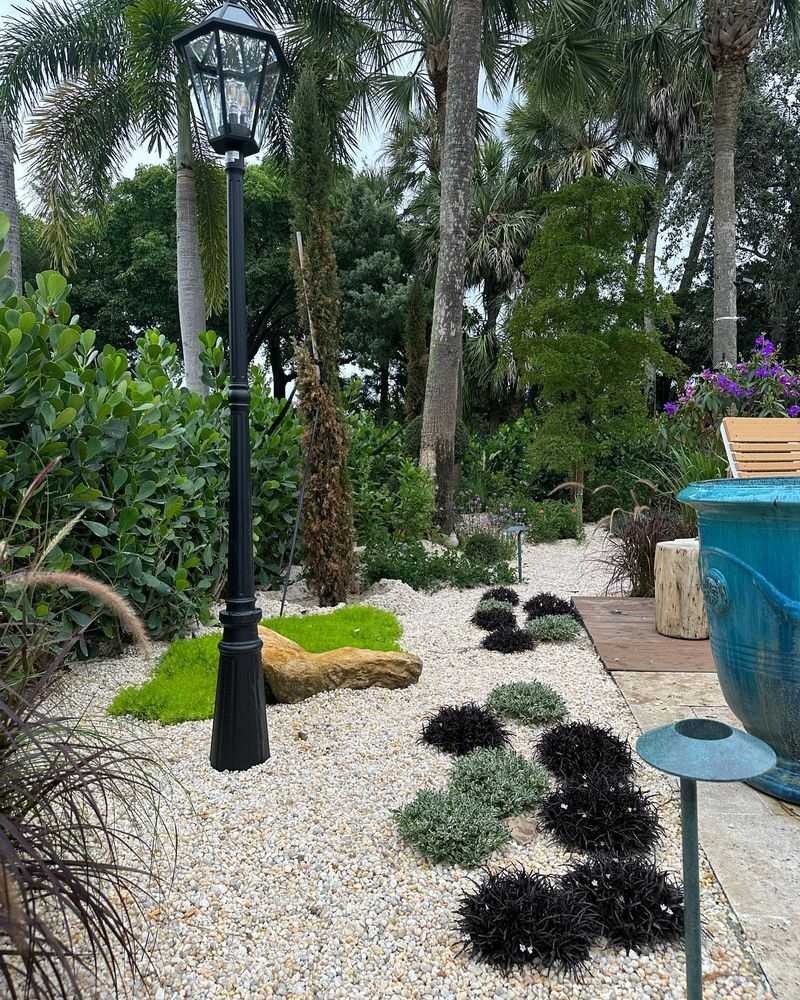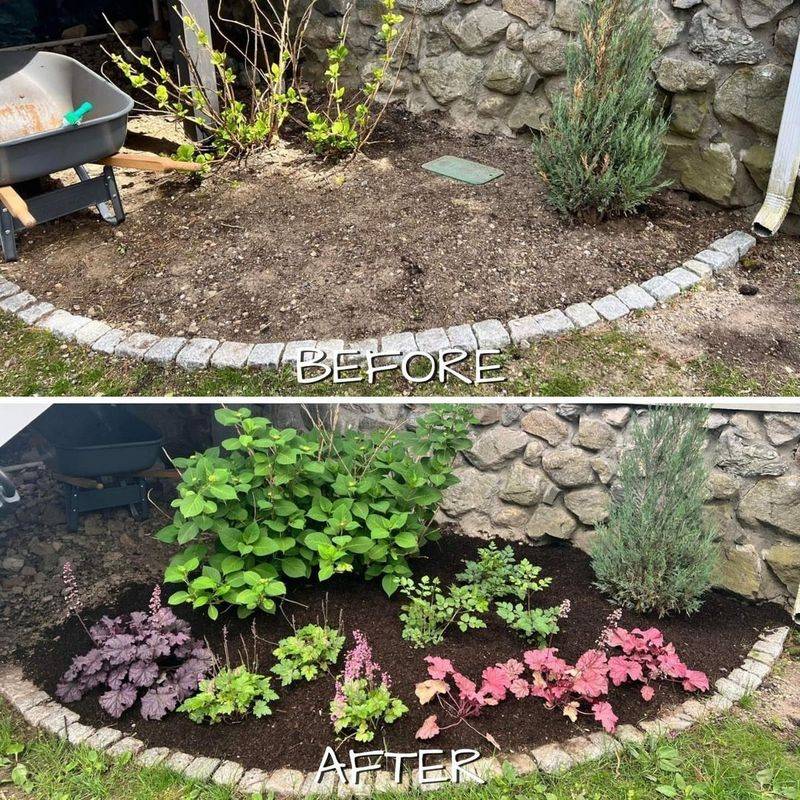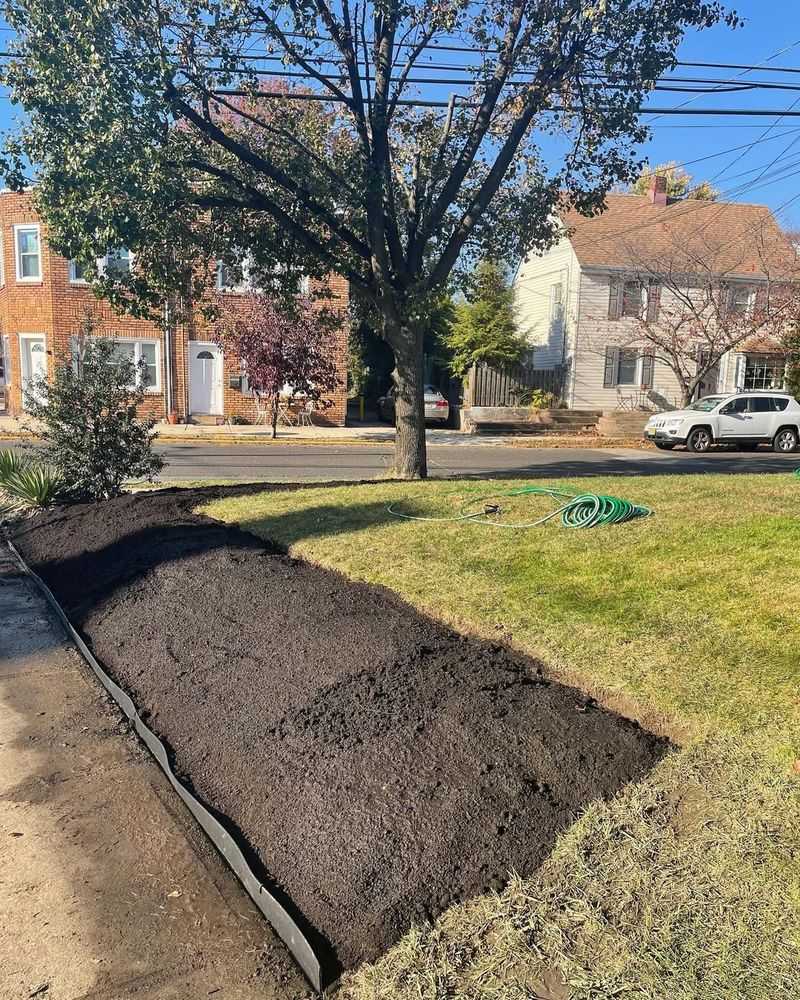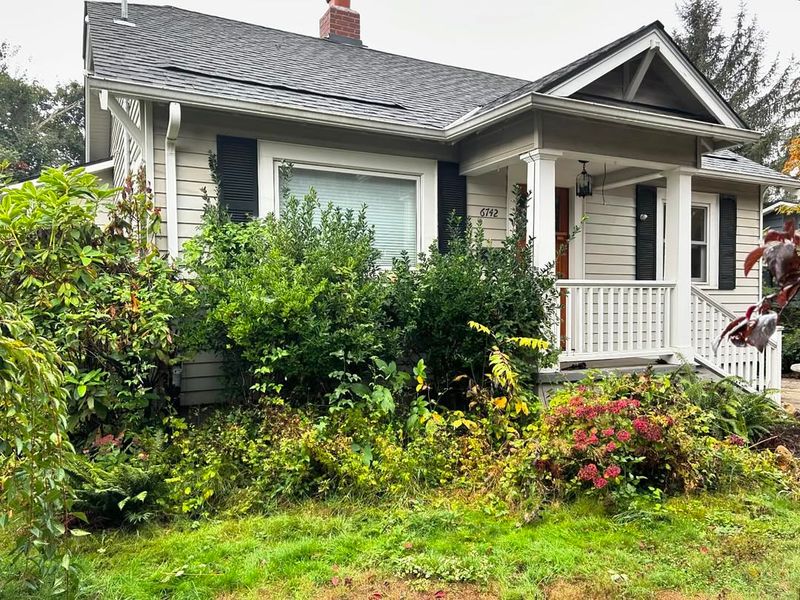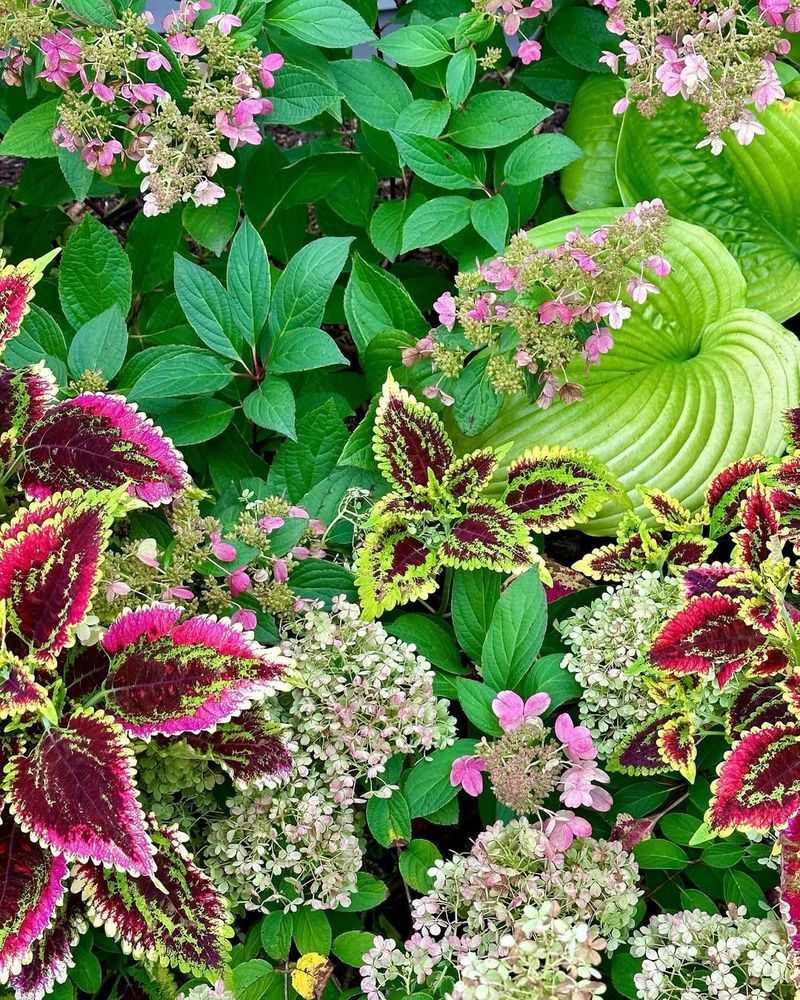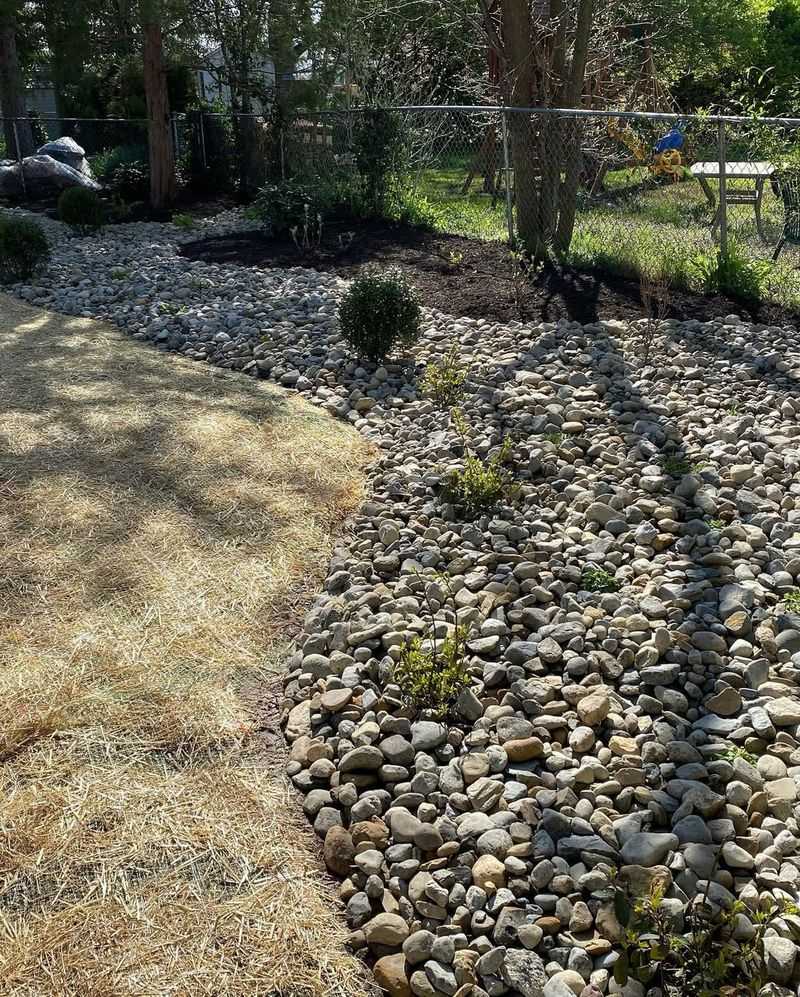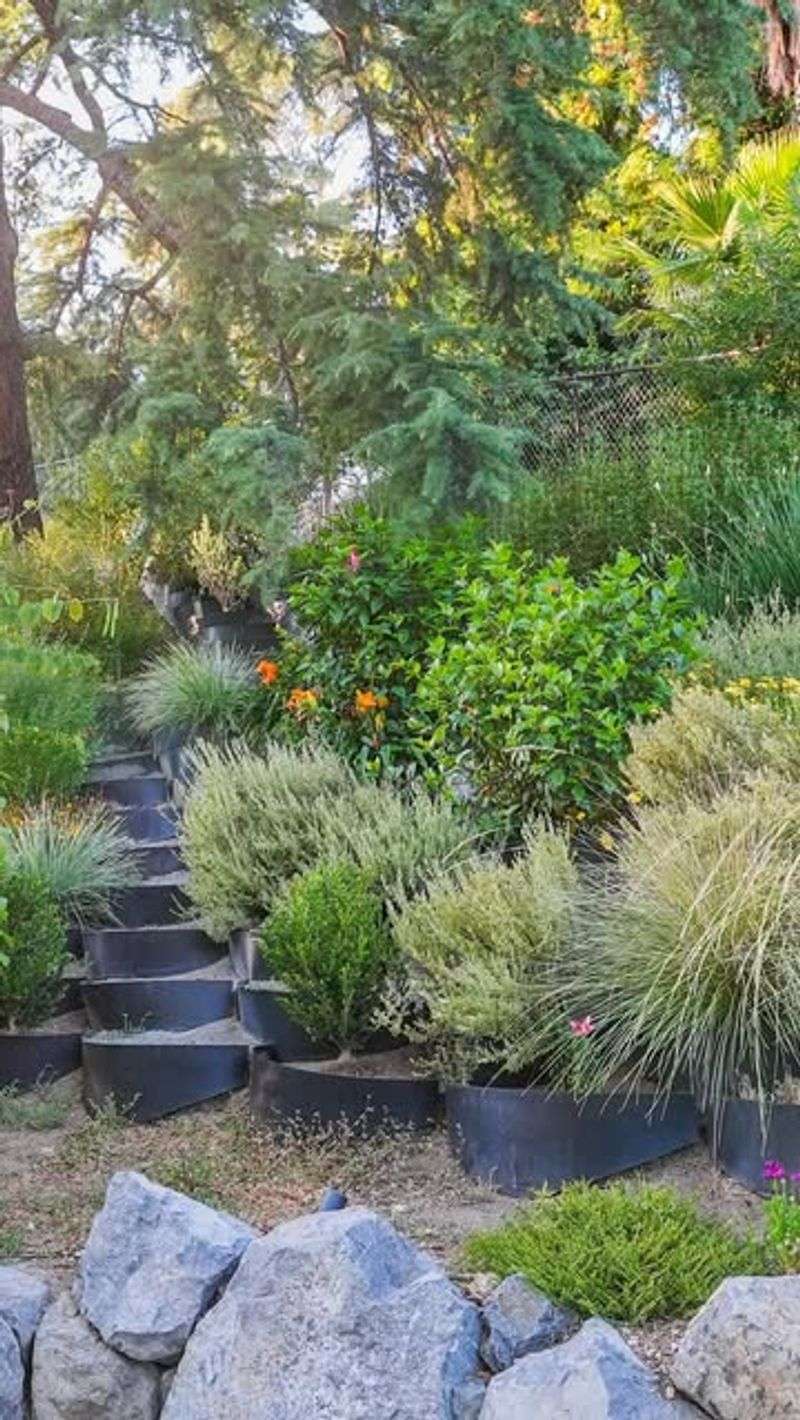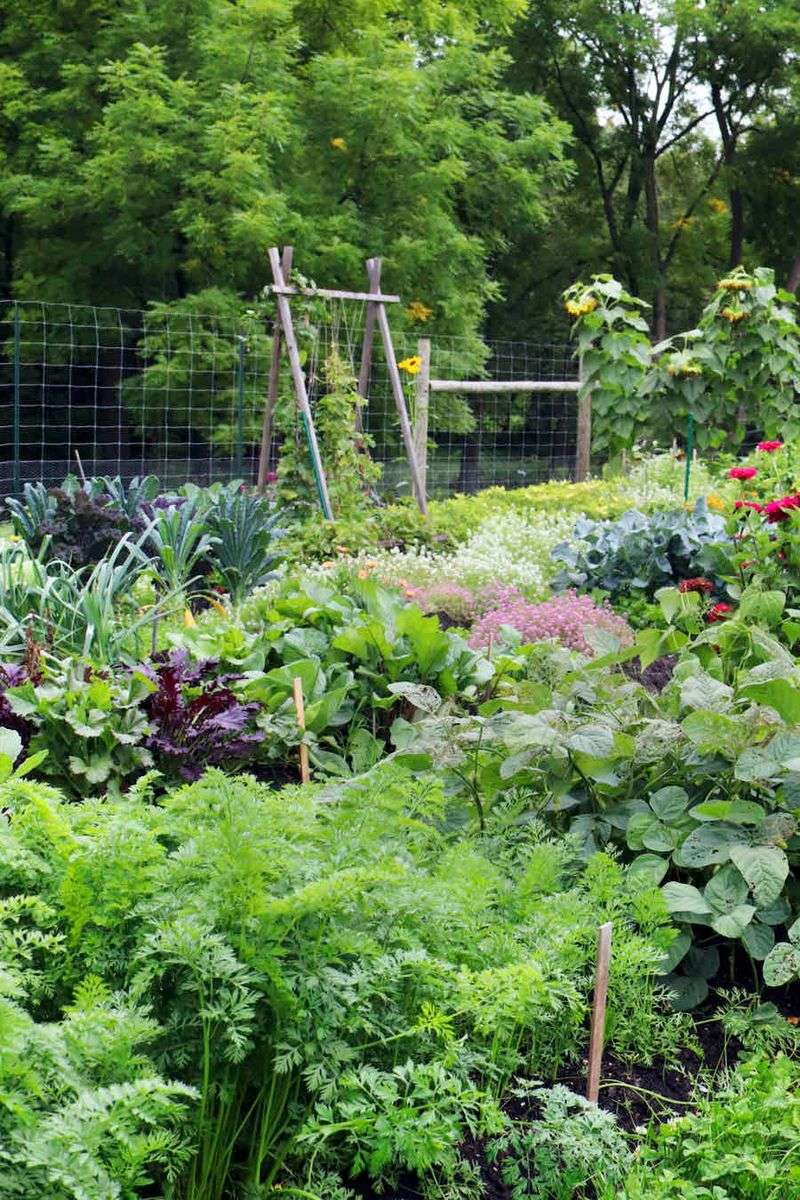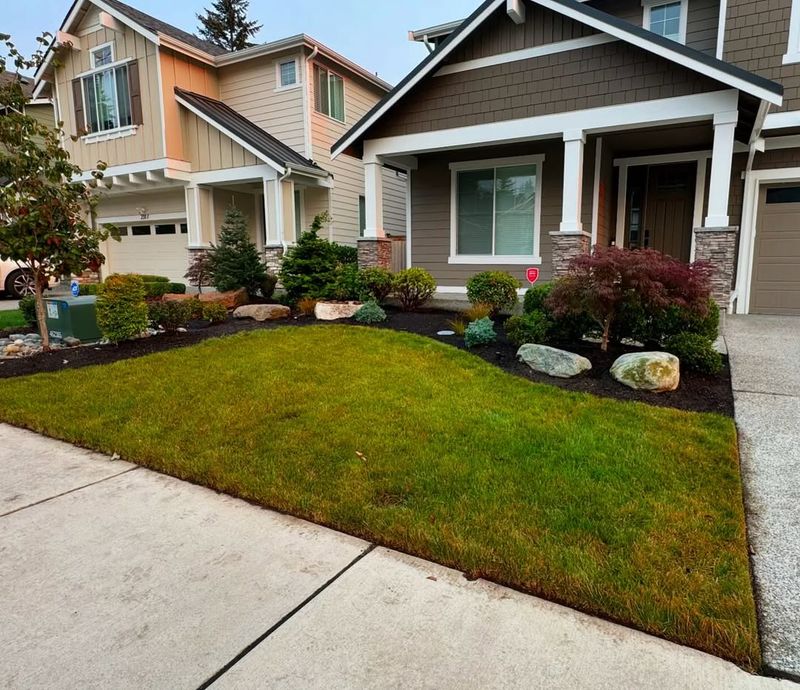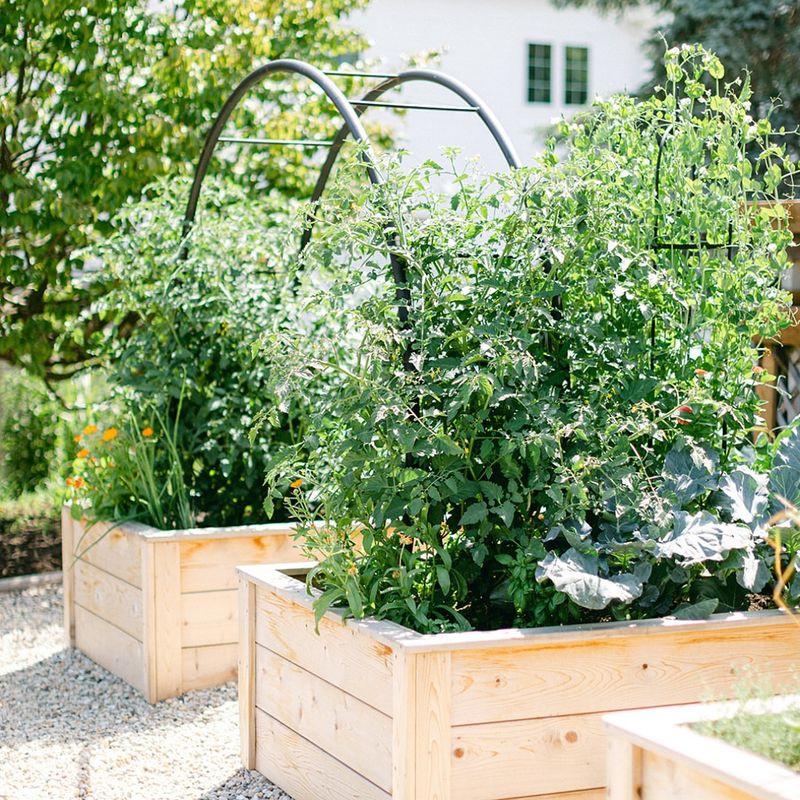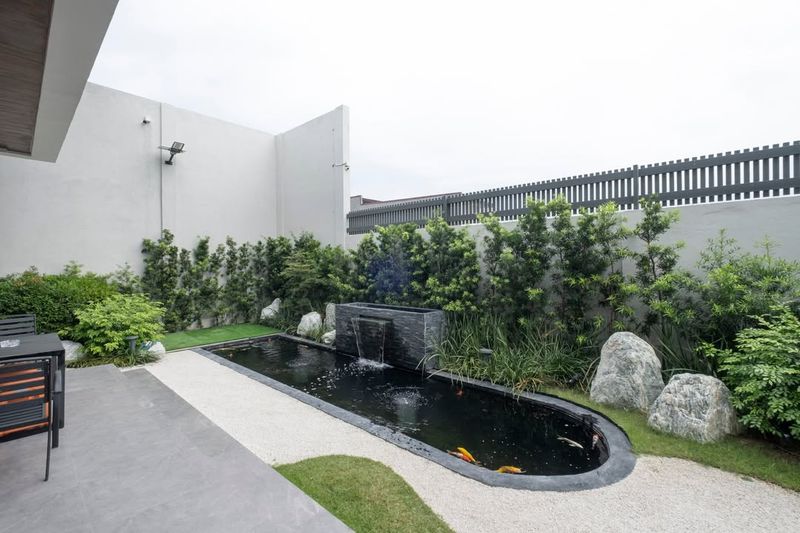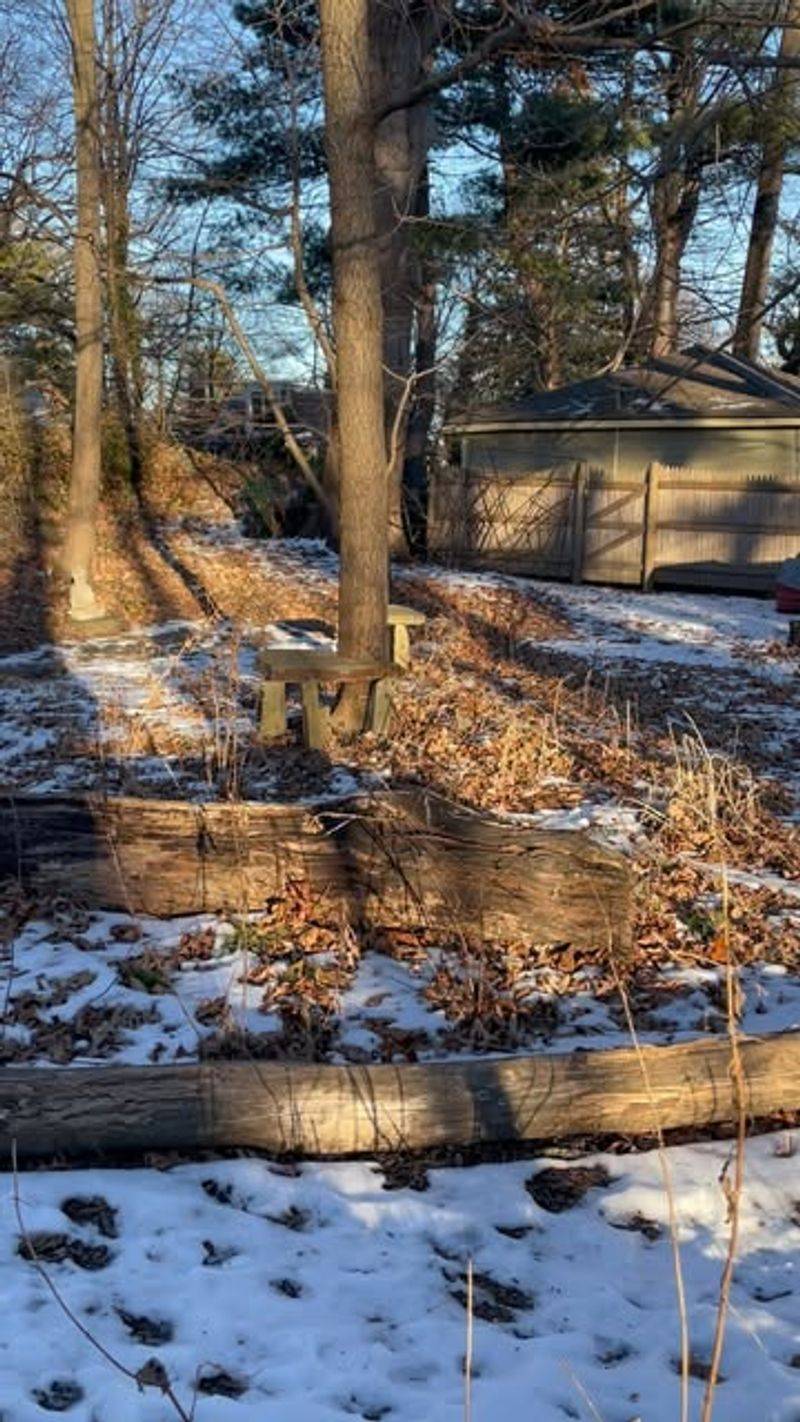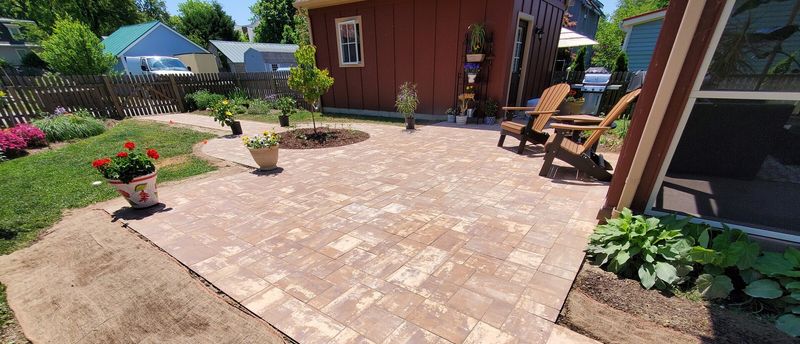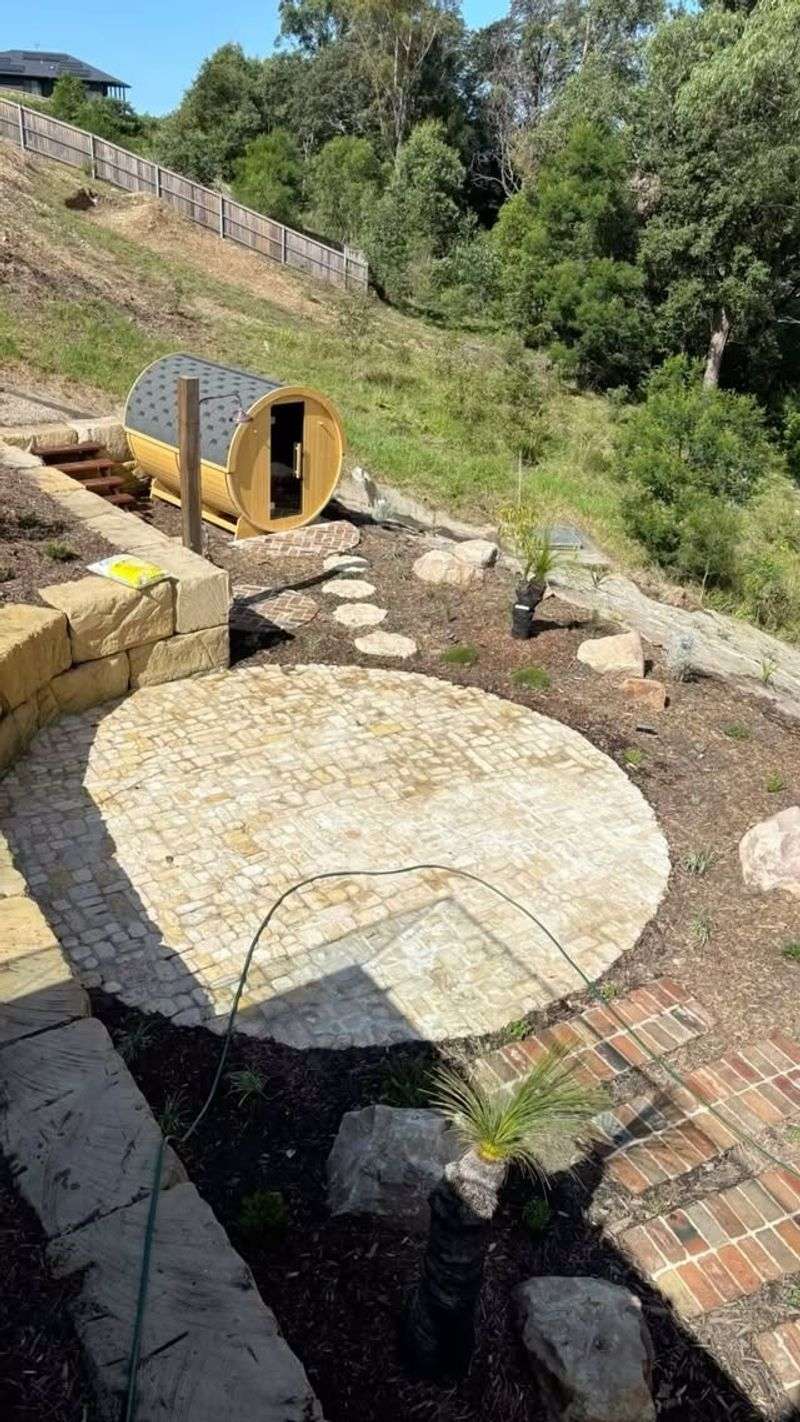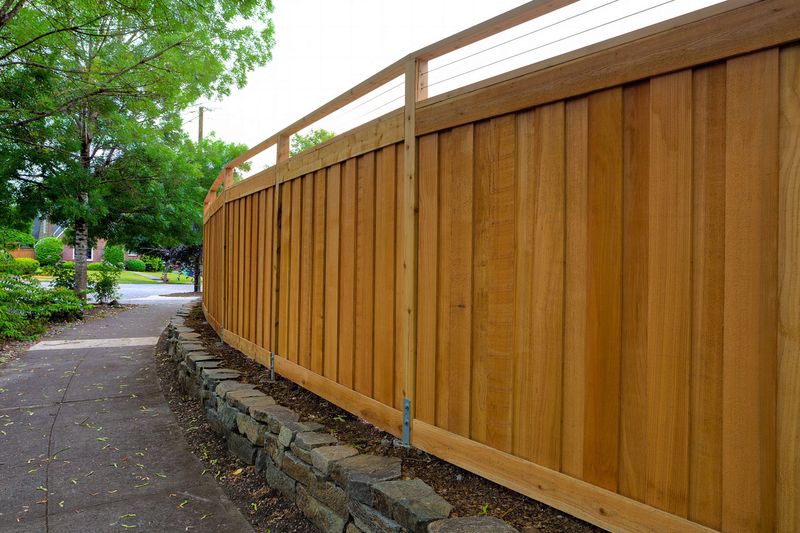Creating a beautiful garden is like painting a masterpiece, but sometimes things don’t turn out the way we plan. Mistakes in garden design can lead to more work and frustration. Let’s explore 20 common garden design mishaps so you can avoid them and enjoy a blossoming backyard.
1. Overcrowded Plants
Think of planting too close together like forcing plants into a traffic jam—they’ll struggle to move, breathe, and thrive. Overcrowded gardens lead to fierce competition for sunlight, water, and nutrients, leaving plants stressed and underdeveloped.
Proper spacing is essential for healthy root systems, better airflow, and stronger growth. Check the spacing recommendations for each plant before digging in—it’s one of the simplest ways to boost your garden’s success.
And don’t forget to consider mature plant size, not just seedlings. Leave access paths, too, so you can care for your garden without stepping over or damaging your plants.
2. Poor Soil Quality
Poor soil is like a lumpy, low-quality mattress—your plants won’t rest easy or grow well in it. Without the right balance of nutrients, even the most promising plants will struggle.
Start by testing your soil so you know exactly what you’re working with. From there, mix in compost, aged manure, or other organic matter to boost fertility and structure.
Well-fed soil holds moisture better, supports strong roots, and reduces the need for constant fertilizing. Don’t forget to rework your soil at the start of each season to keep it loose, rich, and ready for new growth.
3. Inadequate Watering System
A garden without water is like a fish out of water—lifeless and struggling. Consistent moisture is key to plant health, and the best way to deliver it is with a reliable watering system.
Drip irrigation or soaker hoses provide steady hydration right at the roots while conserving water. Don’t just set it and forget it—check regularly for dry spots, clogs, or oversaturated areas.
Smart watering keeps your garden thriving, reduces stress on your plants, and saves you time in the long run.
4. Ignoring Sunlight Needs
Sunlight is just as essential as water when it comes to plant health. Putting sun-lovers in the shade—or shade-lovers in full sun—sets them up for stress and stunted growth.
Take time to observe how sunlight moves through your garden throughout the day, then match your plant choices to those conditions.
Grouping plants based on their light needs not only keeps them thriving, but also makes care easier and your garden more cohesive and vibrant.
5. Lack of Focal Point
A garden without a focal point is like a story without a main character—something feels missing. Whether it’s a bold plant, a sculptural piece, or a water feature, a standout element helps anchor the space and guide the eye.
Without it, the design can feel disjointed or chaotic. Choose one clear centerpiece and let the surrounding elements support it. This simple design trick creates a sense of purpose, balance, and visual harmony throughout your garden.
6. Neglecting Seasonal Changes
A well-designed garden shouldn’t fade with the seasons. Overlooking seasonal shifts can leave your space sparse in winter or overwhelming in summer.
The key is balance—blend perennials that bloom in waves with evergreens that hold structure and color year-round.
By planning with all four seasons in mind, your garden stays vibrant, textured, and visually interesting no matter the month. It’s the secret to a landscape that truly shines all year long.
7. Too Much Lawn
A wide expanse of lawn might look neat at first glance, but it often falls flat in both function and flair. Large grassy areas demand constant mowing and offer little in terms of visual interest or biodiversity.
Breaking up the space with flower beds, trees, or even a small vegetable patch adds depth, color, and personality. Plus, it cuts down on maintenance while transforming your garden into a more dynamic and welcoming retreat.
8. Ignoring Local Wildlife
A truly thriving garden hums with life—not just from plants, but from the wildlife it welcomes. Skipping features that support birds, bees, and beneficial insects means missing out on nature’s built-in beauty and balance.
Add a bird feeder, a small water feature, or native plants that attract pollinators. These simple touches turn your garden into a lively, self-sustaining ecosystem, boosting pollination, keeping pests in check, and adding movement and sound to your outdoor space.
9. Mismatched Plant Colors
Garden colors should work in harmony, not clash for attention. A jarring mix of hues can make even the most well-planned space feel chaotic.
Instead of planting at random, choose a color scheme that flows—whether it’s soft pastels, bold brights, or calming cool tones.
Sticking to complementary colors or a cohesive palette brings unity and elegance to your garden, making every bloom feel like part of a well-composed masterpiece.
10. Unpractical Pathways
Garden paths should invite you in, not trip you up. Poorly designed walkways can make your space hard to navigate and less enjoyable to explore.
Keep pathways wide enough for easy movement, and choose durable materials that can handle foot traffic and changing weather.
When thoughtfully planned, paths do more than connect spaces—they enhance the garden’s flow, add structure, and elevate its overall charm and functionality.
11. Overlooking Drainage
Nothing sabotages a garden faster than poor drainage. Standing water suffocates roots, attracts pests, and turns healthy soil into a soggy mess.
Take time to assess how water moves through your space after heavy rain. Simple fixes—like raised beds, soil amendments, or adding sand and gravel—can make a big difference.
Good drainage keeps roots happy, plants thriving, and your entire garden in healthy balance.
12. Lack of Privacy
Privacy is what transforms a garden from just a yard into your own personal retreat. Without it, the space can feel exposed, less peaceful, and harder to truly enjoy.
Adding elements like hedges, decorative fences, trellises, or tall plants helps carve out quiet, intimate corners.
Creating that sense of seclusion invites relaxation and reflection, turning your garden into a sanctuary where you can unwind in comfort and peace.
13. Overambitious Planting
A diverse garden can be beautiful—but too much variety too soon can turn your space into a chaotic jungle. Overplanting makes it harder to manage and often leads to a messy, overcrowded look.
Start with a few standout plants that fit your space and style, then build from there. Growing your garden gradually allows you to control layout, manage maintenance, and create a more cohesive, welcoming environment.
14. Neglecting Maintenance
Maintenance is the quiet rhythm that keeps a garden alive and flourishing. Let it slide, and your peaceful space quickly turns wild and unruly.
Simple habits—like weeding, pruning, and clearing debris—go a long way in keeping everything neat and thriving.
Set a manageable routine to stay on top of tasks without the overwhelm. With consistent care, your garden stays healthy, beautiful, and always ready to be enjoyed.
15. Failure to Plan for Growth
Plants don’t stay small forever—and forgetting that can lead to a tangled, overcrowded mess. Without planning for mature size, even the most organized garden can become hard to manage.
Before planting, take time to research how big each plant will get and give it the space it needs to grow.
Thinking ahead not only prevents future headaches but also keeps your garden functional, balanced, and beautiful as it evolves year after year.
16. Inconsistent Style
A great garden tells a story—one that flows, not confuses. Mixing too many styles without a clear vision can leave your space feeling disjointed and chaotic.
Whether it’s modern, cottage, tropical, or minimalist, choose a theme that speaks to you and carry it throughout. Consistency in plants, materials, and decor brings unity, turning your garden into a well-composed, visually satisfying retreat.
17. Ignoring Climate
The most successful gardens don’t fight nature—they follow its lead. Planting without considering your local climate often results in stressed, high-maintenance greenery.
Instead, choose plants that are naturally suited to your region’s weather, rainfall, and seasons. This approach not only helps your garden thrive with less effort and fewer resources, but also supports sustainability.
A climate-conscious garden is resilient, efficient, and effortlessly beautiful.
18. Improper Use of Hardscaping
Hardscaping brings structure and definition to a garden, but when overdone, it can leave the space feeling sterile and uninviting.
The key is balance—blend elements like stone paths, retaining walls, or patios with lush greenery, flowing borders, and soft textures. Let the plants soften the edges and bring life to the design.
When thoughtfully integrated, hardscape features enhance the garden’s layout while keeping nature at the heart of it all.
19. Failure to Consider Views
A truly well-designed garden looks good from every angle. Tall plants or bulky structures placed without thought can block views and disrupt the overall experience.
Instead, position greenery and features to frame and highlight focal points, not hide them. Pay attention to sightlines from key spots like windows, patios, or garden paths.
With a little planning, you can create a space that feels open, inviting, and visually stunning from every perspective.
20. Ignoring Noise Pollution
Unwanted noise can quickly steal the serenity from your outdoor space. Ignoring it means missing out on the calm your garden should provide.
Strategic additions like dense hedges, privacy fences, or the gentle trickle of a water feature can help muffle outside sounds and restore tranquility.
A peaceful atmosphere not only boosts relaxation but also transforms your garden into a true retreat from the noise of daily life.

